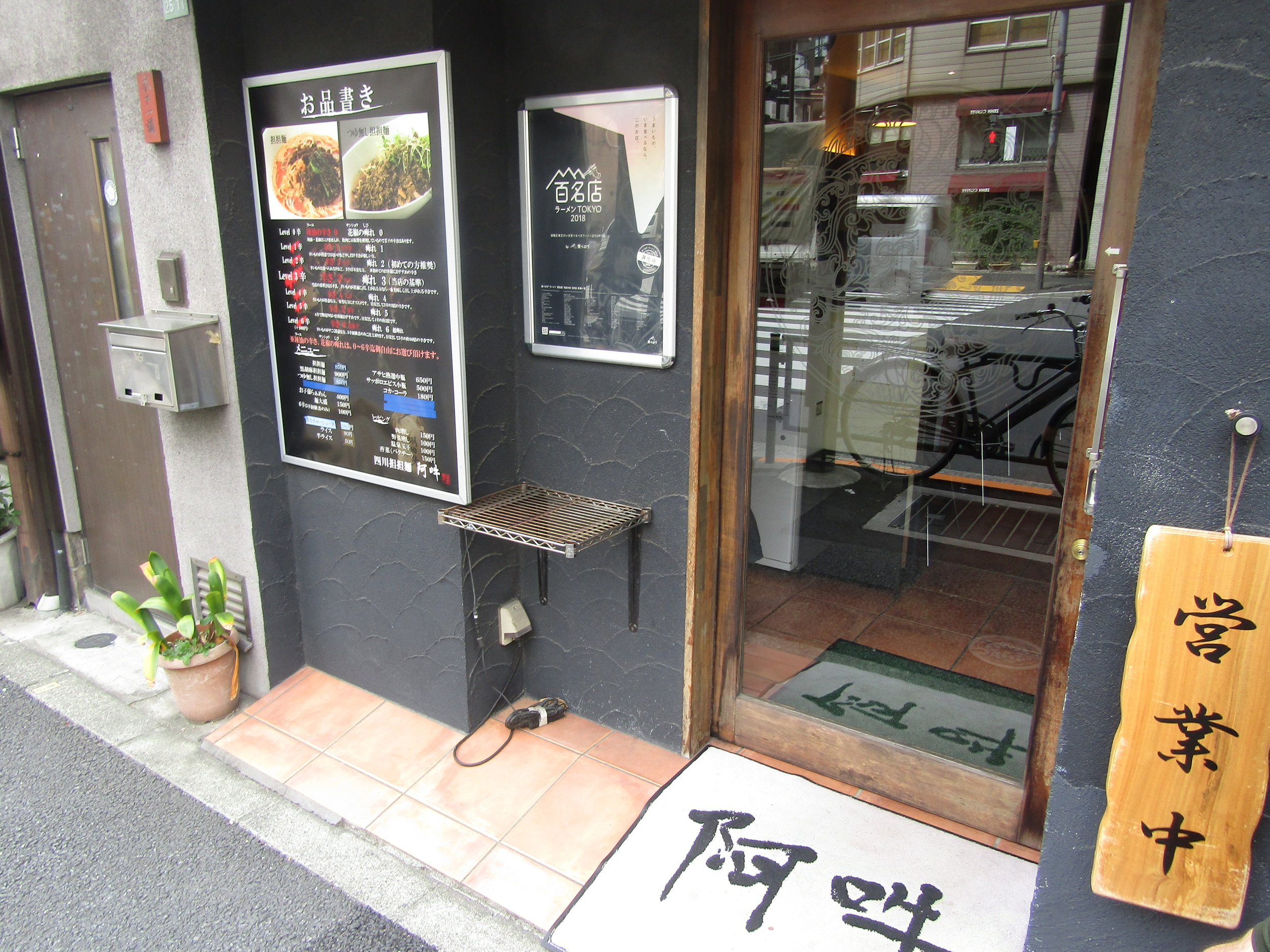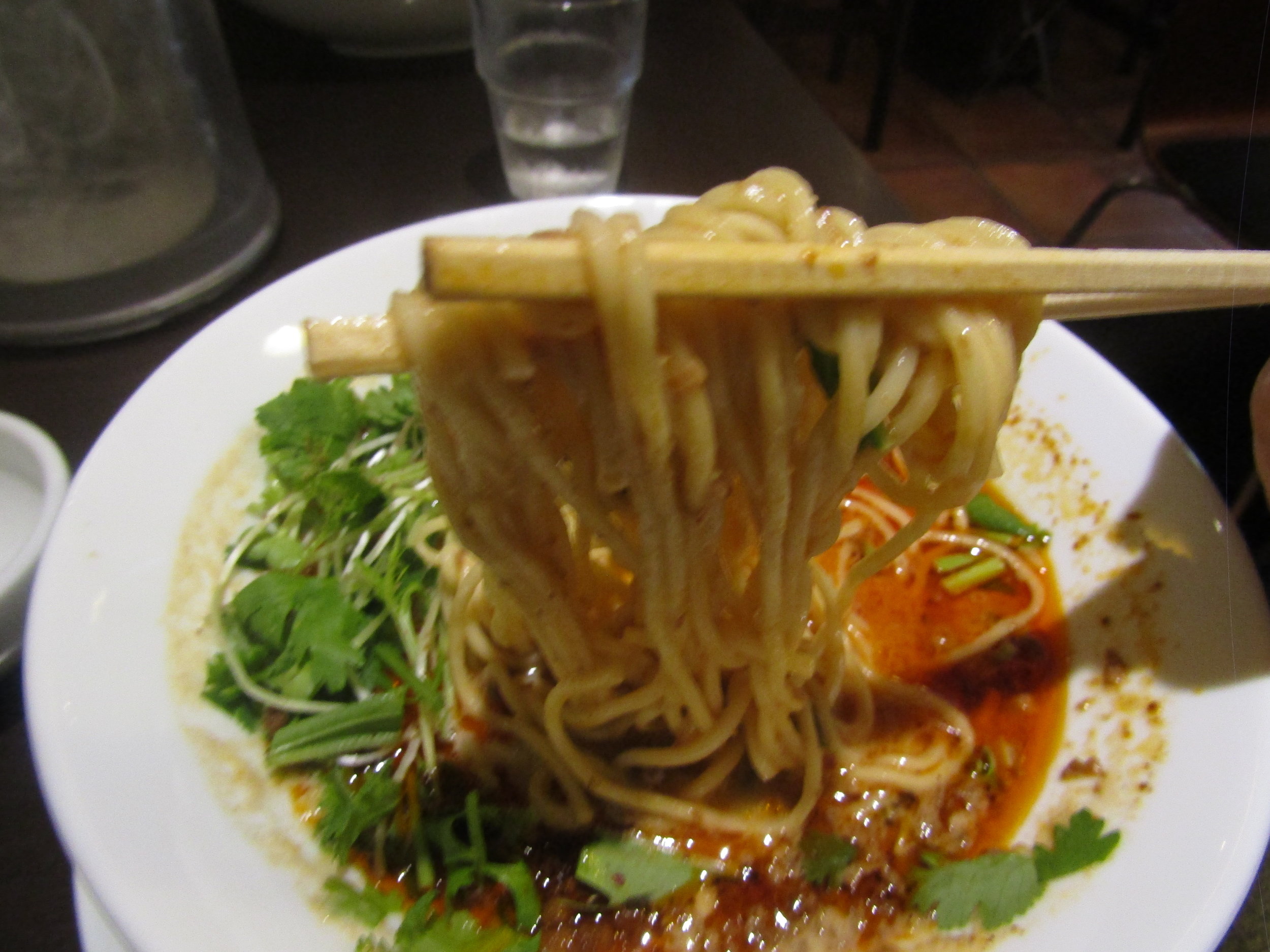Sichuan (Szechuan) Tantanmen Aun (四川担担麺 阿吽); Spicy Prince of Tokyo, Yushima
While browsing top ramen shops in Tokyo, I was a bit hesitant of Tantanmen Aun because I’m not quite sure if I consider it to be ramen. Of course there are different styles and varieties of ramen, but I feel that tantanmen (or dan dan noodles) are so different that it could be categorized in a class of its own. Regardless of whether you do or not (or if you think I do or not), what I will say is that this is a top flight tantanmen restaurant and is worthy of a visit. Just a short walk from Yushima station, or a 15 minute walk from Akihabara, Szechuan Tantanmen Aun is quite popular among the office workers in the area so be sure to prepare yourself for a wait during lunch hours…and have some yogurt to coat your stomach lining if you’re not the best with spicy food.
The menu here is quite simple. They have two tantanmen varieties: one with soup and the other without. Both are highly regarded and so your decision really comes down to preference. If I had to choose, I would say go without the soup as their broth isn’t really their selling point. I did try both, so you can of course make your decision after reading my review. I’ll start with the one with the soup.
The menu allows you to choose between one with soup and one without. Then you decided on the amount of chili oil and Sichuan peppercorn you’d like in your bowl (above a 6 is an extra 100 yen). Toppings include extra meat, extra vegetables, soft boiled egg, cilantro, and powdered cheese. I opted for a level 5 for both the chili oil and Sichuan peppercorn while adding the cilantro as topping. As you can see from the picture, they really load up on the chili oil when you go for extra spicy and while you can’t really see it, they load up on the Sichuan peppercorn as well. However, you’re not gonna find this place in any “spiciest tantanmen” lists as even the 5 wasn’t terribly spicy. The soup itself is quite creamy with a very strong sesame seed flavor. Both the soup and spicy oil are homemade and pairs incredibly well. While the difference in density will ensure they don’t mix, the noodles do an amazing job of clinging both the soup and oil with every bite. I did have a bit of peanut flavor (which is typical in Chinese style tantan noodles) so if you’re allergic, be sure to let them know. The mixture of spicy from the chili oil, mellowness of the sesame seed soup, saltiness of the minced pork, and the freshness of the sprouts make it a very well balanced bowl.
If you’re a fan of cilantro I definitely recommend it. If not, add some extra veggies since you do wish for some extra fresh crunch as you reach the end of the bowl. The oily, fattiness of the bowl will have you craving a bit of fresh greens and the cilantro gives a very nice kick that compliments it and helps cut through a bit of that fat. The sauteed mined pork is also incredibly flavorful. The pork is cooked to its limit and the maillard reaction of it ups the intensity of flavors within the bowl. Noodles are very traditional Chinese style noodles, as typical for tantanmen. They have a nice bounce, and chewy texture that doesn’t lose to the intensity of flavors in the soup and works incredibly well for the bowl. A little bit of small fried shrimp top the bowl and adds another dimension of flavor and texture to the dish.
The non soup version is actually my favorite. Again, their soup isn’t really their selling point and, to be honest, the flavors work better in this style. Noodles remain nice and chewy as it doesn’t cook within the soup, the minced pork maintains its texture, and the sprouts keep its fresh crunch. In addition, a bowl of non soup version also comes with a bit of spicy pickled mustard leaves which adds to the overall flavor of the bowl. Once mixed, the intensity of flavors are multiplied when you can taste each ingredient in one bite. I feel like the soup dilutes the spiciness a bit, so fair warming, this version will be a lot spicier if you opt for the higher levels. The bowl has just enough soup and oil that coats the noodles evenly and perfectly. Pictured is the white sesame version and they also offer a black sesame as well. I think the white sesame works better, but again, this is up to preference.
To be fair, Aun isn’t going to blow you away with any one thing. Of course, almost everything in the bowl is specifically selected and homemade for the bowl, but as the saying goes, the whole is greater than the sum of its parts. Also, as you might be able to tell from my previous posts, I try and give each place a nickname for what I think it best resembles. I gave Aun, the Prince of Tokyo designation. The King label has to go to Nakiryu, the lone Michelin Star winning tantanmen of Tokyo, but you’re not gonna leave here disappointed. Aun is a solid choice and worthy of its designation as a Top 100 Ramen Restaurant by Tabelog. Definitely make your way here if you’re in the mood for some good quality tantanmen.





